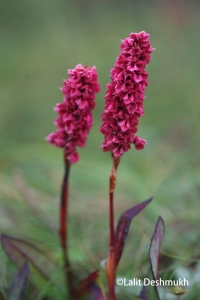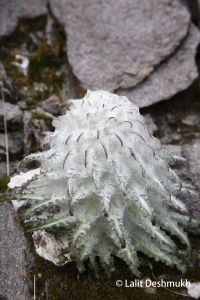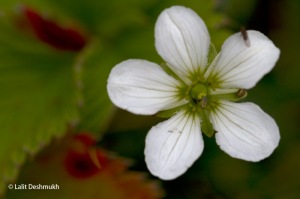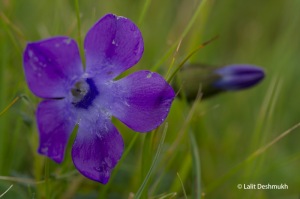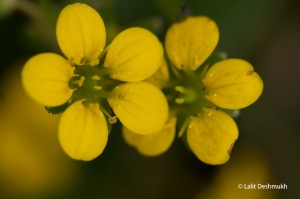Himalayan Blossoms-A glimpse into the world of alpine flowers (Part-III)
Botanical Information by: Sadhana Deshmukh
Editor: Himalee Adhav
Photographer: Lalit Deshmukh
The Himalayas, the ‘roof-of-the-world’ are the highest mountain ranges in the world. We usually imagine them to be cold, snow-covered places with little or no vegetation. However, as with every other place on the earth, the plant kingdom doesn’t cease to amaze us with its assorted collection of colorful flowers that can be seen blooming all over these rugged mountains and in the valleys that lie within.
This series of blogs will cast a light upon the various flora seen in and around the Roopkund Lake in Uttarakhand. The photographs have been captured at altitudes ranging from 5500 ft., in the Garhwal region of the Lesser Himalayas or the Himachals to 16700 ft., in the Higher Himalayas or the Himadris, during a trek to the Roopkund Lake.
#11 Himalayan Fleeceflower
Botanical Name: Polygonum affine
Family: Polygonaceae
The Himalayan Fleeceflower is a low-creeping, densely-tufted alpine herb. Many individuals of these herbs grow together forming a mat on the ground. The leaves are narrow and elliptical. Their leaves are mostly at the base and the mid-vein of the leaves is prominent.The Himalayan Fleeceflower is found throughout the Himalayas.
#12 Snowball Plant
Botanical Name: Saussurea gossypiphora
Family: Asteraceae
Local Name: Kasturi Kamal
The Snowball plant looks like a wool-covered ball of snow. The shape of this plant is globular. The name of the species, gossypiphora, means cotton-bearing. The leaves of this plant are embedded in the wool that covers the plant. A species belonging to the Threatened category, this is considered a sacred plant, locally. Its medicinal properties include wound-healing, asthma and skin diseases.
#13 Himalayan Bog Star
Botanical Name: Parnassia nubicola
Family: Saxifragaceae
Local Name: Phutkya
The Himalayan Bog Star is a plant bearing white-colored flowers. This plant is a perennial herb. Nubicola means one that occurs in the mountains. The plant extract is used for healing food poisoning and rootstocks are used against external snakebites.
#14 Small-leaved Trailing Bellflower
Botanical Name: Cyananthus microphyllus
Family: Campanulaceae
It is a low-growing alpine herb. The flowers are blue-colored and the leaves are small. Thus, the Genus name is Cyananthus meaning blue flower and Species name is microphyllus meaning small leaves. It needs humus rich soil and a bit of shade for surviving. It is a native plant of the Himalayas.
#15 Himalayan Saxifraga
Botanical Name: Saxifraga parnassifolia
Family: Saxifragaceae
The Himalayan Saxifraga is a perennial herb. In Latin, Saxum means stone and frango means to break. Thus, these are the plants whose roots can penetrate rock crevices and attach these plants to any such substratum. These herbs are found in the Himalayas in rock crevices in the mountains and also in the alpine meadows.
References:
Book References:
1) Valley of Flowers by K.R.Keshava Murthy
2) Concise Flowers of the Himalaya by Oleg Polunin & Adam Stainton
Web Reference:
